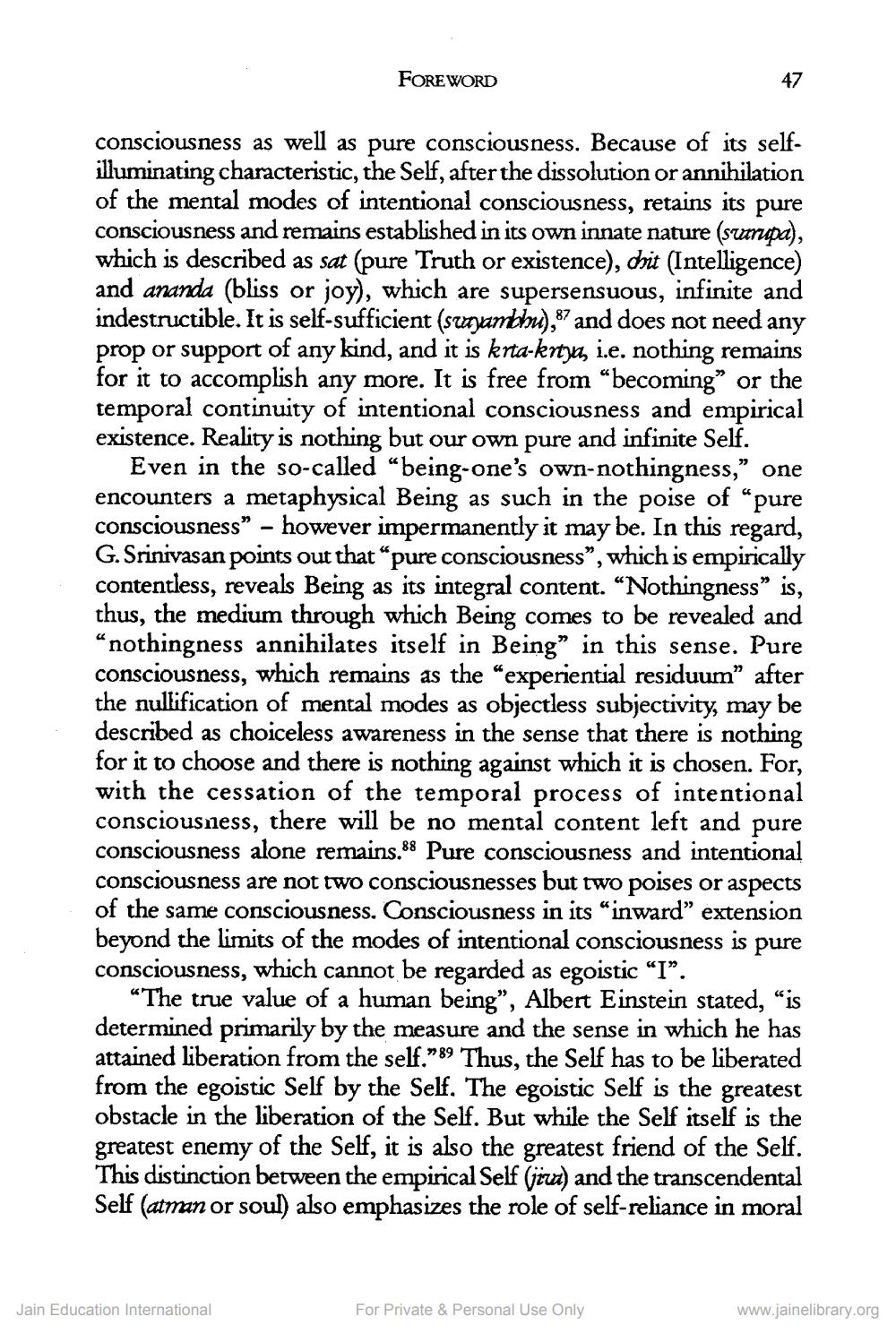________________
FOREWORD
consciousness as well as pure consciousness. Because of its selfilluminating characteristic, the Self, after the dissolution or annihilation of the mental modes of intentional consciousness, retains its pure consciousness and remains established in its own innate nature (surupa), which is described as sat (pure Truth or existence), chit (Intelligence) and ananda (bliss or joy), which are supersensuous, infinite and indestructible. It is self-sufficient (scayantini), 97 and does not need any prop or support of any kind, and it is krta-knya, i.e. nothing remains for it to accomplish any more. It is free from “becoming" or the temporal continuity of intentional consciousness and empirical existence. Reality is nothing but our own pure and infinite Self.
Even in the so-called “being-one's own-nothingness," one encounters a metaphysical Being as such in the poise of “pure consciousness” – however impermanently it may be. In this regard, G. Srinivasan points out that “pure consciousness”, which is empirically contentless, reveals Being as its integral content. “Nothingness” is, thus, the medium through which Being comes to be revealed and “nothingness annihilates itself in Being” in this sense. Pure consciousness, which remains as the "experiential residuum" after the nullification of mental modes as objectless subjectivity, may be described as choiceless awareness in the sense that there is nothing for it to choose and there is nothing against which it is chosen. For, with the cessation of the temporal process of intentional consciousness, there will be no mental content left and pure consciousness alone remains.88 Pure consciousness and intentional consciousness are not two consciousnesses but two poises or aspects of the same consciousness. Consciousness in its “inward” extension beyond the limits of the modes of intentional consciousness is pure consciousness, which cannot be regarded as egoistic “I”.
"The true value of a human being”, Albert Einstein stated, “is determined primarily by the measure and the sense in which he has attained liberation from the self.”89 Thus, the Self has to be liberated from the egoistic Self by the Self. The egoistic Self is the greatest obstacle in the liberation of the Self. But while the Self itself is the greatest enemy of the Self, it is also the greatest friend of the Self. This distinction between the empirical Self (jira) and the transcendental Self (atman or soul) also emphasizes the role of self-reliance in moral
Jain Education International
For Private & Personal Use Only
www.jainelibrary.org




